mfstructural
Structural
- Feb 1, 2009
- 230
Hey everyone,
I looked at a house the other day to determine the condition of the residence and foundation. The floors of the house were sloped from front to back about 2 degrees. Walking around, I could actually feel the slope. It was a split level type house, and you could see the ceilings sloping with respect to the door casings in the basement. The interior finishings of the house appeared to be old, wood paneling and the such, most likely at least 20 years old. There were no cracks or separations at the interior of the house. This leads me to believe that the house most likely settled a while back and has not moved much since.
There was also an interesting buttress type of foundation at the exterior corner that was lower than the front of the house. This particular corner seemed to be the lowest corner in the house even though the entire rear foundation wall had settled. There were some cracks in the side foundation walls, presumably from the bending stresses imparted on them as the rear of the house settled. there was paint within the cracks also leading me to believe the cracks had been there sometime. Maybe these were poured in an effort to reduce settlement?
I'm trying to determine the cause and safety concerns with the house. It is definitely sloping and it is very noticeable when walking around. You are kind of "pulled" to the rear as a result of the slope. The fact that I didn't see any new separations and all the gypsum board junctions were clean was an indication that the settlement was not recent. That being said, the house was recently purchased by the homeowner back in January and there may have been repairs performed right before the sale. Another thing I should mention is that the gutters discharged adjacent to the house, so water could pool against the foundation, causing possible settlement. it's also unknown what the subgrade is (maybe it was over excavated and improperly compacted).
I don't think the house is a life safety hazard or about to collapse, but it is a serviceability issue. I'm not really sure what to say about it, it's sloping. As far as repairs how would one repair something like this? You would have to jack up the entire rear foundation uniformly right? Also, in your experience what's the cost of that?
I included some pictures:
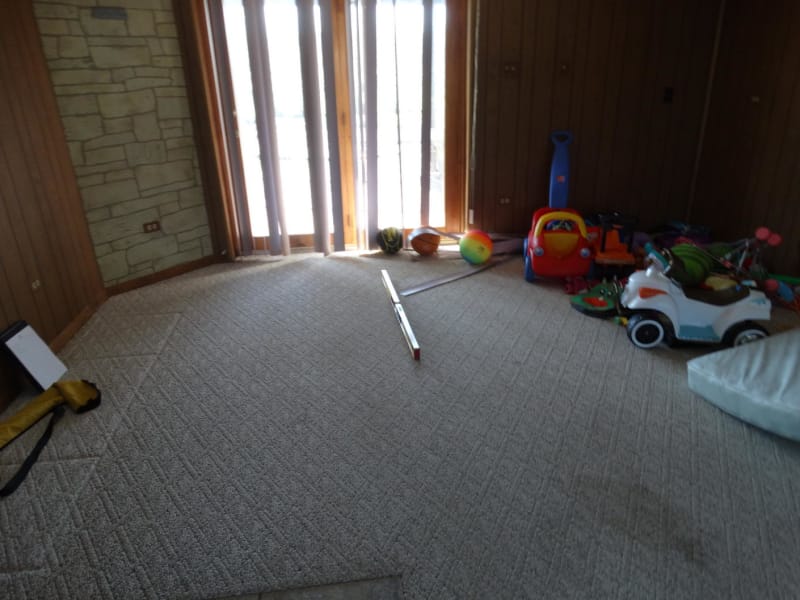
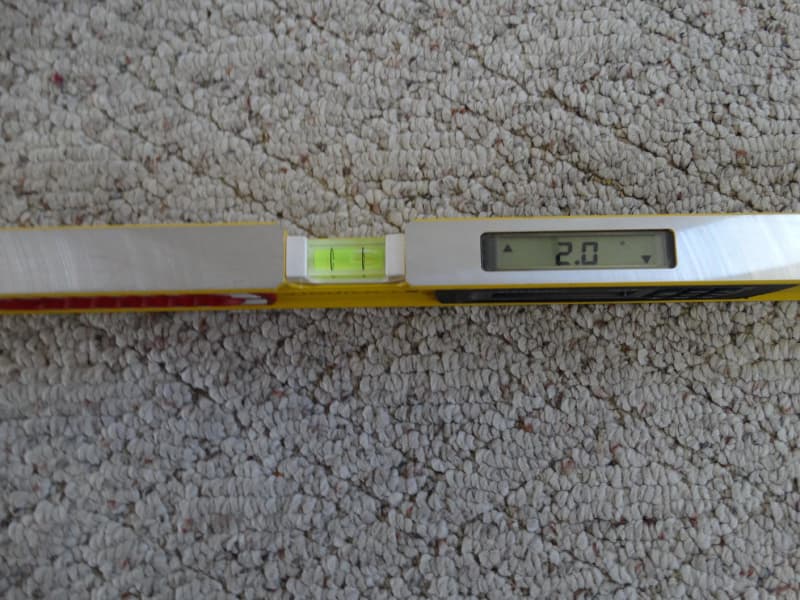
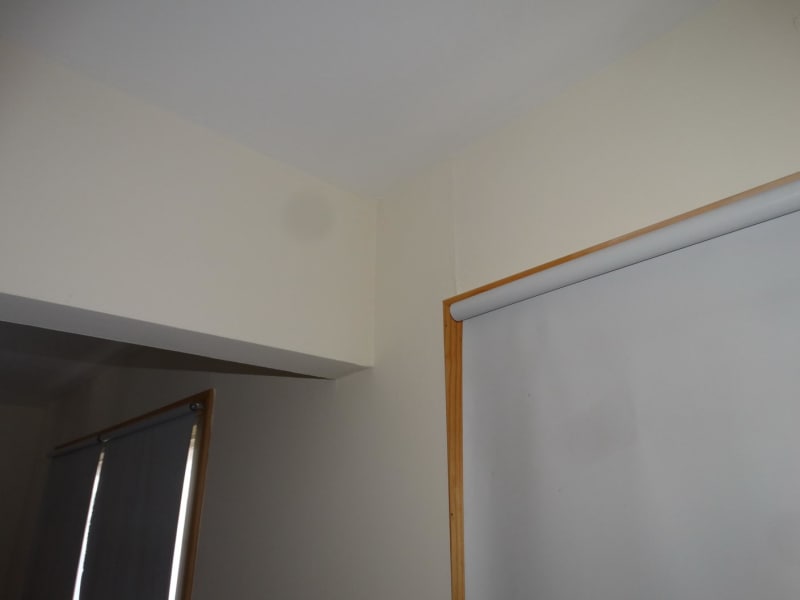
This is the only stress crack in the house

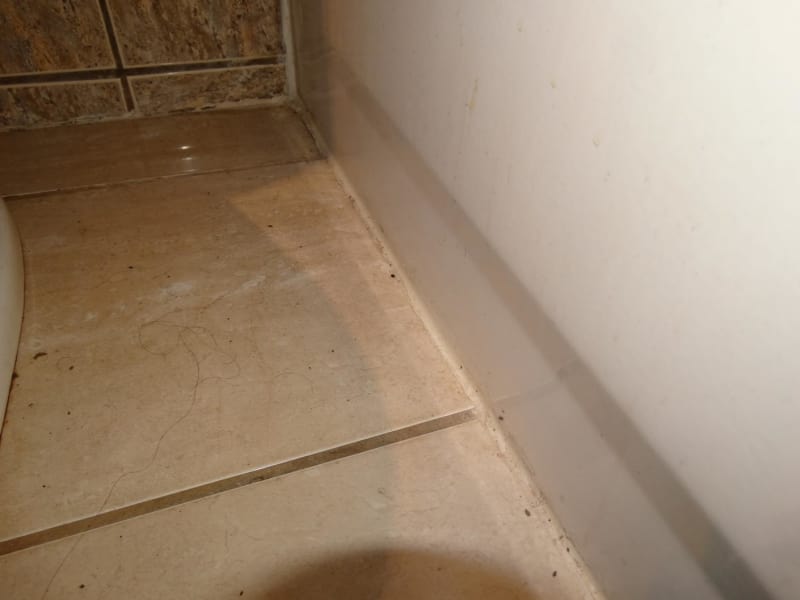
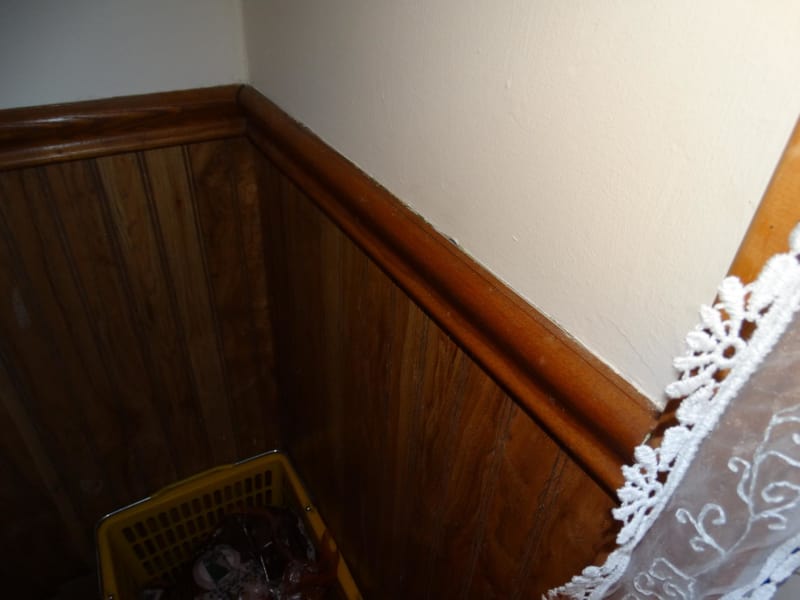
Foundation reinforcing
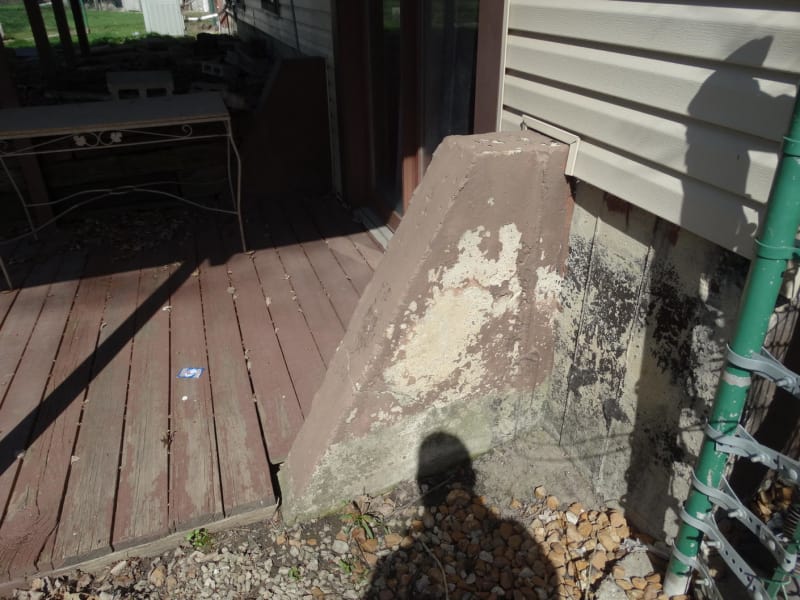
I looked at a house the other day to determine the condition of the residence and foundation. The floors of the house were sloped from front to back about 2 degrees. Walking around, I could actually feel the slope. It was a split level type house, and you could see the ceilings sloping with respect to the door casings in the basement. The interior finishings of the house appeared to be old, wood paneling and the such, most likely at least 20 years old. There were no cracks or separations at the interior of the house. This leads me to believe that the house most likely settled a while back and has not moved much since.
There was also an interesting buttress type of foundation at the exterior corner that was lower than the front of the house. This particular corner seemed to be the lowest corner in the house even though the entire rear foundation wall had settled. There were some cracks in the side foundation walls, presumably from the bending stresses imparted on them as the rear of the house settled. there was paint within the cracks also leading me to believe the cracks had been there sometime. Maybe these were poured in an effort to reduce settlement?
I'm trying to determine the cause and safety concerns with the house. It is definitely sloping and it is very noticeable when walking around. You are kind of "pulled" to the rear as a result of the slope. The fact that I didn't see any new separations and all the gypsum board junctions were clean was an indication that the settlement was not recent. That being said, the house was recently purchased by the homeowner back in January and there may have been repairs performed right before the sale. Another thing I should mention is that the gutters discharged adjacent to the house, so water could pool against the foundation, causing possible settlement. it's also unknown what the subgrade is (maybe it was over excavated and improperly compacted).
I don't think the house is a life safety hazard or about to collapse, but it is a serviceability issue. I'm not really sure what to say about it, it's sloping. As far as repairs how would one repair something like this? You would have to jack up the entire rear foundation uniformly right? Also, in your experience what's the cost of that?
I included some pictures:



This is the only stress crack in the house



Foundation reinforcing


![[idea] [idea] [idea]](/data/assets/smilies/idea.gif)
![[r2d2] [r2d2] [r2d2]](/data/assets/smilies/r2d2.gif)